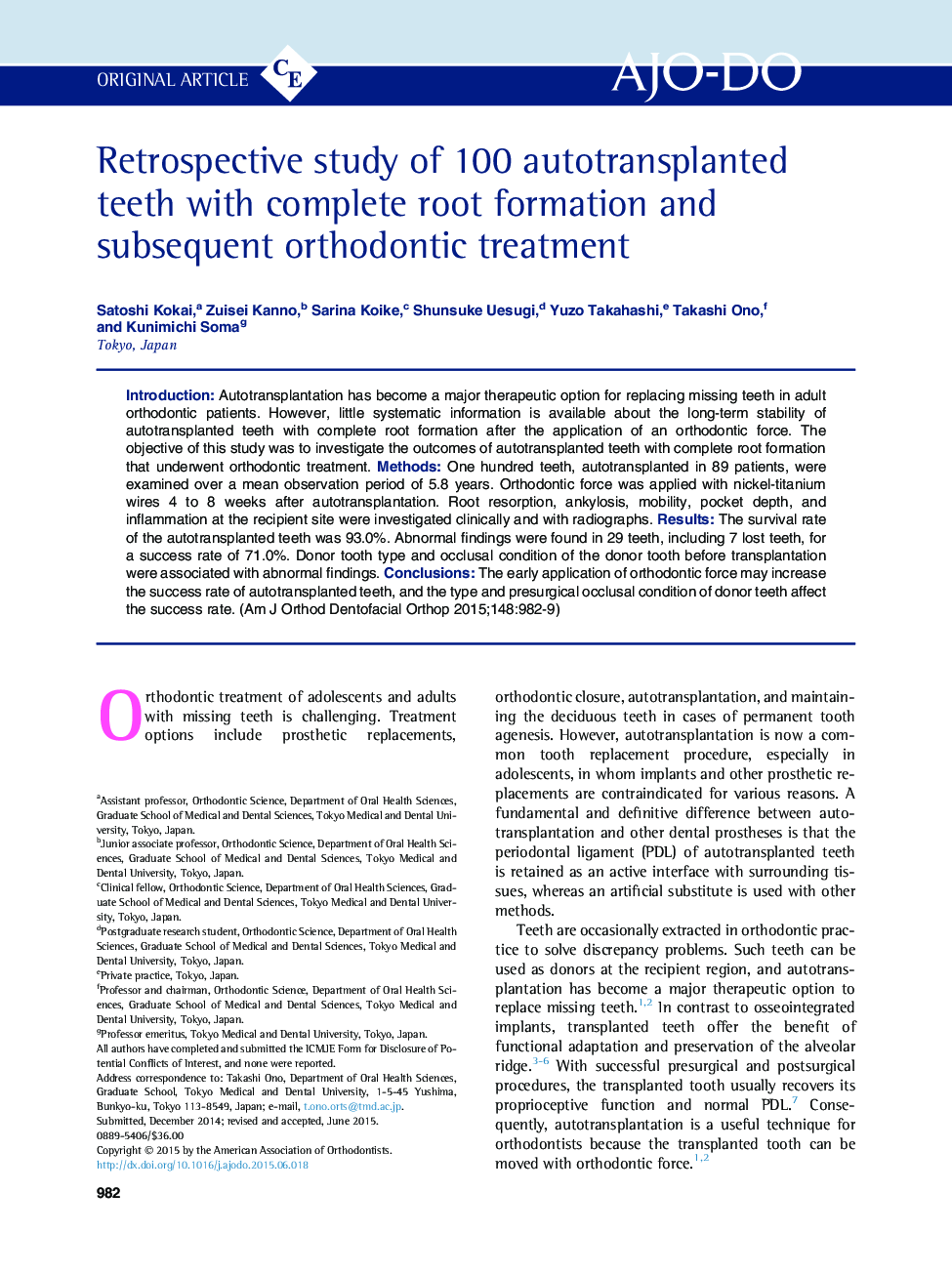| Article ID | Journal | Published Year | Pages | File Type |
|---|---|---|---|---|
| 3115265 | American Journal of Orthodontics and Dentofacial Orthopedics | 2015 | 8 Pages |
•We investigated the outcomes of autotransplanted teeth with complete root formation.•The survival rate of autotransplanted teeth was 93.0%; the success rate was 71.0%.•Early application of orthodontic force may increase autotransplanted tooth success.•The type and presurgical occlusal condition of donor teeth affect the success rate.
IntroductionAutotransplantation has become a major therapeutic option for replacing missing teeth in adult orthodontic patients. However, little systematic information is available about the long-term stability of autotransplanted teeth with complete root formation after the application of an orthodontic force. The objective of this study was to investigate the outcomes of autotransplanted teeth with complete root formation that underwent orthodontic treatment.MethodsOne hundred teeth, autotransplanted in 89 patients, were examined over a mean observation period of 5.8 years. Orthodontic force was applied with nickel-titanium wires 4 to 8 weeks after autotransplantation. Root resorption, ankylosis, mobility, pocket depth, and inflammation at the recipient site were investigated clinically and with radiographs.ResultsThe survival rate of the autotransplanted teeth was 93.0%. Abnormal findings were found in 29 teeth, including 7 lost teeth, for a success rate of 71.0%. Donor tooth type and occlusal condition of the donor tooth before transplantation were associated with abnormal findings.ConclusionsThe early application of orthodontic force may increase the success rate of autotransplanted teeth, and the type and presurgical occlusal condition of donor teeth affect the success rate.
